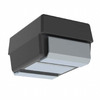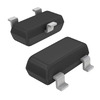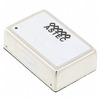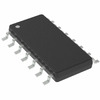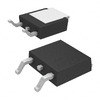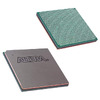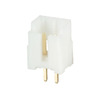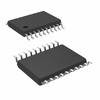Atmega8A vs Atmega328P Microcontrollers: Choosing the Right One for Your Needs
In the world of microcontrollers, the ATmega8A and ATmega328P are renowned for their energy efficiency, adaptability, and versatile applications across electronics projects. While they share a similar physical form factor, the differences in their specifications and capabilities reveal distinct advantages for various tasks. This article provides an in-depth comparison of these two AVR family microcontrollers, exploring key specifications, functional distinctions, and practical applications. By examining their unique attributes—such as memory capacity, processing speed, and I/O capabilities—this guide aims to help you choose the most suitable microcontroller to enhance the performance and efficiency of their embedded systems.Catalog
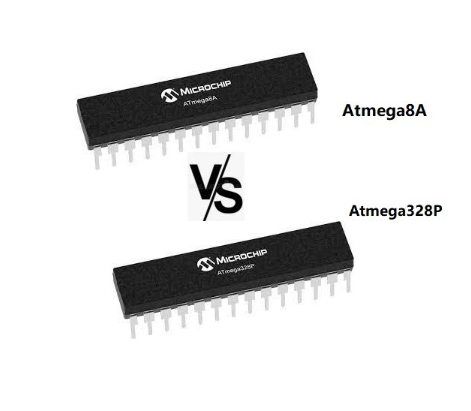
ATmega8A & ATmega328P Overview
ATmega8A
The ATmega8A, created by Microchip, serves as a compact, 8-bit microcontroller utilizing the AVR RISC architecture. Its design allows for executing instructions within a single clock cycle, culminating in performance levels that can approach 1 MIPS per MHz. This characteristic grants you the freedom to judiciously balance processing velocity with energy consumption. In actual scenarios, these attributes can be harnessed to achieve device efficiency while ensuring optimal performance. This inherent flexibility renders the ATmega8A an attractive option for a broad range of embedded system designs.
ATmega328P
An equally compelling counterpart, the ATmega328P, also emerging from Microchip's innovation, is a capable 8-bit controller built upon the AVR RISC platform. Its frequent use in ARDUINO boards highlights its widespread appeal, driven by reliability and multifunctional prowess. You can find value in the ATmega328P's approachable nature and the strong backing of an active community, which facilitates extensive experimentation.
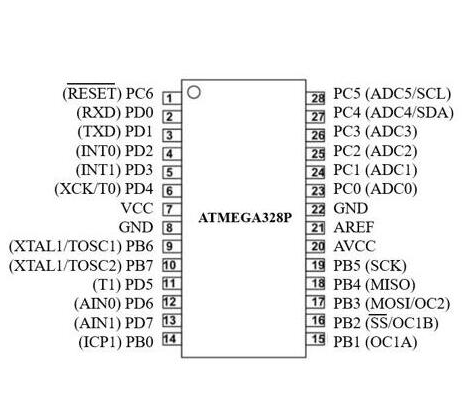
Sharing a uniform 28-pin layout with the ATmega8A, these microcontrollers offer ease of transition and replacement across various projects. The noteworthy adaptability of such MCUs plays a remarkable role in pushing the boundaries of embedded applications, making it easier to handle intricate tasks with efficiency.
|
Pin Number |
Description |
Function |
|
1 |
PC6 |
Reset |
|
2 |
PD0 |
DigitalPin (RX) |
|
3 |
PD1 |
DigitalPin (TX) |
|
4 |
PD2 |
DigitalPin |
|
5 |
PD3 |
DigitalPin (PWM) |
|
6 |
PD4 |
DigitalPin |
|
7 |
Vcc |
Positive Voltage (Power) |
|
8 |
GND |
Ground |
|
9 |
XTAL1 |
Crystal Oscillator |
|
10 |
XTAL2 |
Crystal Oscillator |
|
11 |
PD5 |
DigitalPin (PWM) |
|
12 |
PD6 |
DigitalPin (PWM) |
|
13 |
PD7 |
DigitalPin |
|
14 |
PB0 |
DigitalPin |
|
15 |
PB1 |
DigitalPin (PWM) |
|
16 |
PB2 |
DigitalPin (PWM) |
|
17 |
PB3 |
DigitalPin (PWM) |
|
18 |
PB4 |
DigitalPin |
|
19 |
PB5 |
DigitalPin |
|
20 |
AV CC |
Positive Voltage for ADC (Power) |
|
21 |
A REF |
Reference Voltage |
|
22 |
GND |
Ground |
|
23 |
PC0 |
Analog Input |
|
24 |
PC1 |
Analog Input |
|
25 |
PC2 |
Analog Input |
|
26 |
PC3 |
Analog Input |
|
27 |
PC4 |
Analog Input |
|
28 |
PC5 |
Analog Input |
Comparing Atmega8A and Atmega328P Features
Features of Atmega8A
|
Feature |
Details |
|
Microcontroller |
High-performance, Low-power Atmel AVR 8-bit
Microcontroller |
|
Architecture |
Advanced RISC Architecture |
|
Instruction Set |
131 powerful instructions – most single clock cycle
execution |
|
32 × 8 General Purpose Working Registers + Peripheral
Control Registers |
|
|
Fully Static Operation |
|
|
Up to 16MIPS Throughput at 16MHz |
|
|
Multiplier |
On-chip 2-cycle Multiplier |
|
Non-volatile Memory |
8KBytes of In-System Self-programmable Flash program
memory |
|
512Bytes EEPROM |
|
|
1KByte Internal SRAM |
|
|
Write/erase cycles: 10,000 flash/100,000 EEPROM |
|
|
Data retention: 20 years at 85°C/100 years at 25°C |
|
|
Optional Boot Code Section with Independent Lock Bits |
|
|
Programming |
In-System Programming by On-chip Boot Program |
|
Read-While-Write Operation |
True Read-While-Write Operation |
|
Programming Lock for Software Security |
|
|
Peripheral Features |
Two 8-bit Timer/Counters with Separate Prescaler and
Compare Mode |
|
One 16-bit Timer/Counter with Separate Prescaler,
Compare Mode, and Capture Mode |
|
|
Real-Time Counter with Separate Oscillator |
|
|
Three PWM Channels |
|
|
8-channel ADC in TQFP and VQFN package (10-bit
Accuracy) |
|
|
6-channel ADC in PDIP package (10-bit Accuracy) |
|
|
Master/Slave SPI Serial Interface |
|
|
Programmable Watchdog Timer with On-chip Oscillator |
|
| On-chip Analog Comparator |
|
|
Byte-Oriented 2-wire Serial Interface |
|
|
Special Microcontroller Features |
Power-on Reset and Programmable Brown-out Detection |
|
Internal Calibrated RC Oscillator |
|
|
External and Internal Interrupt Sources |
|
|
Six Sleep Modes: Idle, ADC Noise Reduction, Power-save,
Power-down, Standby, and Extended Standby |
|
|
I/O and Packages |
23 Programmable I/O Lines |
|
28-lead PDIP, 32-lead TQFP, and 32-pad VQFN |
|
|
Operating Voltage |
2.7 - 5.5V |
|
Operating Frequency |
0 - 16MHz |
|
Power Consumption |
Active Mode: 3.6mA at 4MHz, 3V, 25°C |
|
Idle Mode: 1.0mA |
|
|
Power-down Mode: 0.5µA |
Features of Atmega328P
|
Feature Category |
Details |
|
Microcontroller Family |
High Performance, Low Power AVR® 8-Bit Microcontroller |
|
Architecture |
Advanced RISC Architecture |
|
- 131 Powerful Instructions – Most Single Clock Cycle
Execution |
|
|
- 32 x 8 General Purpose Working Registers |
|
|
- Fully Static Operation |
|
|
- Up to 20 MIPS Throughput at 20MHz |
|
|
- On-chip 2-cycle Multiplier |
|
|
Non-volatile Memory |
High Endurance |
|
- 4/8/16/32KBytes Flash Program Memory |
|
|
- 256/512/512/1KBytes EEPROM |
|
|
- 512/1K/1K/2KBytes Internal SRAM |
|
|
- Write/Erase Cycles: 10,000 Flash / 100,000 EEPROM |
|
|
- Data Retention: 20 years at 85°C / 100 years at 25°C |
|
|
- Optional Boot Code Section with Independent Lock Bits |
|
|
Programming |
In-System Programming by On-chip Boot Program |
|
True Read-While-Write Operation |
|
|
Programming Lock for Software Security |
|
|
QTouch® Library Support |
- Capacitive touch buttons, sliders, and wheels |
|
- QTouch and QMatrix™ acquisition |
|
|
- Up to 64 sense channels |
|
|
Peripheral Features |
- Two 8-bit Timer/Counters with Separate Prescaler and
Compare Mode |
|
- One 16-bit Timer/Counter with Separate Prescaler,
Compare Mode, and Capture Mode |
|
|
- Real-Time Counter with Separate Oscillator |
|
|
- Six PWM Channels |
|
|
- 8-channel 10-bit ADC (TQFP and QFN/MLF Package) |
|
|
- 6-channel 10-bit ADC (PDIP Package) |
|
|
Communication Interfaces |
- Programmable Serial USART |
|
- Master/Slave SPI Serial Interface |
|
|
- Byte-oriented 2-wire Serial Interface (Philips I2C
compatible) |
|
|
Other On-chip Features |
- Programmable Watchdog Timer with Separate On-chip
Oscillator |
|
- On-chip Analog Comparator |
|
|
- Interrupt and Wake-up on Pin Change |
|
|
Special Microcontroller Features |
- Power-on Reset and Programmable Brown-out Detection |
|
- Internal Calibrated Oscillator |
|
|
- External and Internal Interrupt Sources |
|
|
- Six Sleep Modes: Idle, ADC Noise Reduction, Power-save,
Power-down, Standby, and Extended Standby |
|
|
I/O and Packages |
- 23 Programmable I/O Lines |
|
- 28-pin PDIP, 32-lead TQFP, 28-pad QFN/MLF, and 32-pad
QFN/MLF |
|
|
Operating Voltage |
1.8 - 5.5V |
|
Temperature Range |
-40°C to 85°C |
|
Speed Grade |
- 0 - 4MHz @ 1.8 - 5.5V |
|
- 0 - 10MHz @ 2.7 - 5.5V |
|
|
- 0 - 20MHz @ 4.5 - 5.5V |
|
|
Power Consumption (at 1MHz, 1.8V, 25°C) |
- Active Mode: 0.2mA |
|
- Power-down Mode: 0.1µA |
|
|
- Power-save Mode: 0.75µA (Including 32kHz RTC) |
Diverse Uses of ATmega8A and ATmega328P
The microcontrollers ATmega8A and ATmega328P have earned recognition for their adaptability and reliability across numerous applications. Their specifications allow them to be effectively applied in various domains.
Weather Monitoring Systems
ATmega8A and ATmega328P play a major role in creating efficient weather monitoring frameworks. They efficiently collect data from a myriad of sensors that gauge temperature, humidity, and atmospheric conditions. You can often enhance these systems by merging machine learning algorithms to foresee weather trends, illustrating their dynamic nature.
Enhanced Wireless Communications
In wireless communication systems, leveraging ATmega8A and ATmega328P fosters innovation by facilitating robust device connectivity. You can utilize their low energy usage and proficient processing to craft enduring communication networks operational in distant locales, showcasing their applicability in remote implementations.
Advanced Security Systems
These microcontrollers are key in smart security configurations, offering useful processing for motion detectors, surveillance cameras, and alarm systems. By adopting encryption techniques, they bolster data protection, presenting an effective platform for property security enhancement. This marks the deepening focus on incorporating security into every system layer.
Evolution in Healthcare Devices
Within healthcare, these microcontrollers contribute to impactful applications like patient monitoring and portable diagnostic tools. They enable actual data handling, emphasizing the necessity for prompt and precise medical insights, thus improving patient care and operational workflow in medical settings.
Automotive System Advancements
The ATmega8A and ATmega328P serve the automotive industry through their roles in engine management, infotainment platforms, and advanced driver-assistance systems (ADAS). Their contribution to optimizing fuel usage and cutting emissions signifies progress towards more eco-conscious automotive solutions.
Transformations in Industrial Automation
In industrial environments, these microcontrollers support automation by providing meticulous control over manufacturing and machinery operations. The transition from basic programmable logic controls to more sophisticated systems reflects a shift toward intelligent manufacturing, as noted in the field.
Solar and Renewable Energy Innovations
In renewable energy sectors, both microcontrollers are basic for solar panel regulation, boosting the efficiency of energy conversion and administration. The rise in the adoption of these systems reflects a global commitment to sustainable energy practices, highlighting broad societal shifts.
IoT Systems Integration
Incorporating ATmega8A and ATmega328P in IoT ecosystems is reshaping device interaction, data processing, and analysis. As IoT networks become more intricate, these microcontrollers offer a basis for streamlined data handling and edge processing, contributing to smarter, interconnected environments.
Effective Power Management Strategies
Their contribution to power management is evident in devices prioritizing energy efficiency. Efficient power distribution and conservation are dangerous aspects for you crafting smart grids and home automation systems, steering towards intelligent power management solutions.
Parameters of Atmega8A and Atmega328P
|
Feature |
ATMEGA8A |
ATMEGA328P |
|
Package / Case |
28-DIP (0.300, 7.62mm) |
28-DIP (0.300, 7.62mm) |
|
Number of ADC Channels |
6 |
8 |
|
Operating Temperature |
-40°C ~ 85°C TA |
-40°C ~ 105°C TA |
|
Number of Terminations |
28 |
28 |
|
Height |
4.572mm |
4.064mm |
|
Width |
7.49mm |
7.49mm |
|
Voltage - Supply (Vcc/Vdd) |
2.7V ~ 5.5V |
1.8V ~ 5.5V |
|
Number of PWM Channels |
3 |
6 |
|
Frequency |
16MHz |
20MHz |
|
Program Memory Size |
8KB (4K x 16) |
32KB |
|
RAM Size |
1K x 8 |
2K x 8 |
Equivalents of Atmega8A and Atmega328P
The ATMEGA328P and ATMEGA8 are similar products,so the ATMEGA8 serves as a feasible alternative to the ATMEGA328P.
Functional Block Diagrams of ATmega8A and ATmega328P
Atmega8P Block Diagram

Atmega328P Block Diagram
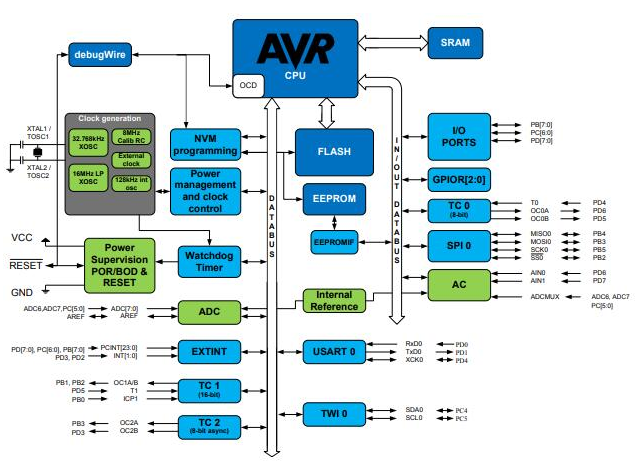
Strategies for Extending the Operational Life of ATmega328P and ATmega8A
Prolonged use of ATmega328P and ATmega8A microcontrollers can be significantly influenced by careful handling and regular maintenance practices. One strategy involves monitoring the input voltages to maintain values below 5.5V, which mitigates the risk of damage caused by over-voltage conditions. Incorporating routine checks of voltage levels before establishing connections also helps shield components from unpredictable malfunctions due to sudden power spikes, ensuring smoother operations.
Avoidance of Short Circuits
Conducting comprehensive inspections of pins is useful for circumventing short circuits, as damage or grime on these tiny parts can lead to connectivity problems, incorrect operations, or even complete breakdowns. Establishing cleaning protocols and performing regular visual checks are effective measures to manage these risks. You can often delicately clean pins with isopropyl alcohol, a widely recognized technique for removing debris or oxidation.
Employing IC Sockets
Using IC sockets has the potential to significantly improve the durability and adaptability of microcontrollers. These sockets allow chip replacements and testing without exposing them to the physical strains of soldering. Maintaining the cleanliness of these sockets is a serious aspect, involving methods such as using compressed air to clear out dust and utilizing non-conductive brushes to clean contacts. Awareness of socket maintenance is useful, as shared by you who recount the cascade of errors that arise in projects due to neglected socket care.
Strategic Maintenance Practices
Integrating diligent maintenance protocols into device management can lower operational costs over the long haul. Embracing these practices not only secures the operational stability and efficiency of devices but also enhances their performance reliability. This intricate web of preventive strategies, although seemingly understated, reveals substantial advantages over time, resonating with you who value the sophistication of preventative maintenance.
About us
ALLELCO LIMITED
Read more
Quick inquiry
Please send an inquiry, we will respond immediately.
Frequently Asked Questions [FAQ]
1. What is the ATMEGA328P?
The ATMEGA328P stands out as a versatile 8-bit microcontroller founded on the AVR RISC architecture. Embraced for its remarkable efficiency, it plays a prominent role in ARDUINO boards. This microcontroller demonstrates its capabilities by maintaining an exceptional balance between processing power and energy consumption. Such attributes render it fitting for a variety of electronic projects and innovative developments.
2. Why is the ATMEGA328 used in Arduino?
The introduction of the ATMEGA328/P into Arduino ecosystems stems from its low-power CMOS 8-bit microcontroller framework, meticulously crafted with AVR® architecture. This design boosts performance by encouraging simultaneous operations. It achieves faster data handling and improved system responsiveness through separate memory and data routes. You can therefore empowered to create robust and nimble applications with rewarding efficiency.
3. Is ATMEGA328P a microcontroller?
Indeed, the ATMEGA328 assumes the role of a microcontroller, featuring a modified Harvard architecture. It is part of the megaAVR family within Atmel's diverse range. This adaptable microcontroller is tailored to accommodate a spectrum of applications due to its flexible design and solid functionality, establishing a dependable base for embedded systems.
4. What differentiates ATMEGA328 from ATMEGA328P?
While sharing architectural similarities, the ATMEGA328P shines with reduced power consumption compared to its 328 counterpart. This detail points to a refined production process in the 'P' variant, addressing scenarios where power conservation takes precedence. If energy efficiency is a priority in your project, the choice might lean favorably towards ATMEGA328P.
5. Can the ATMEGA328P be used independently of an Arduino board?
Absolutely, the ATMEGA328P possesses the capability to function independently of an Arduino board. Once programmed through an Arduino, it can be seamlessly woven into circuits accompanied by a 16MHz oscillator and suitable capacitors. This independent functionality broadens the horizons of project execution and enables you to craft custom, tailored solutions that speak to specific design aspirations.
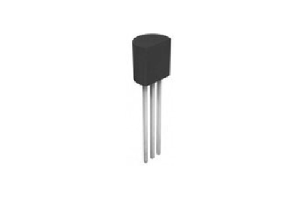
MPSA13 Darlington Transistor: Pinout, Equivalents, and Datasheet
on November 12th

PN2222 vs. 2N2222: Exploring Their Interchangeability and Differences
on November 12th
Popular Posts
-

What is GND in the circuit?
on January 1th 3160
-

RJ-45 Connector Guide: RJ-45 Connector Color Codes, Wiring Schemes, R-J45 Applications, RJ-45 Datasheets
on January 1th 2729
-

Understanding Power Supply Voltages in Electronics VCC, VDD, VEE, VSS, and GND
on November 17th 2340
-

Fiber Connector Types: SC Vs LC And LC Vs MTP
on January 1th 2208
-

Comparison Between DB9 and RS232
on January 1th 1827
-

What Is An LR44 Battery?
Electricity, that ubiquitous force, quietly permeates every aspect of our daily lives, from trivial gadgets to life-threatening medical equipment, it plays a silent role. However, truly grasping this energy, especially how to store and efficiently output it, is no easy task. It is against this background that this article will focus on a type of coin cell battery that may seem insignificant on the...on January 1th 1798
-

Understanding the Fundamentals:Inductance Resistance, andCapacitance
In the intricate dance of electrical engineering, a trio of fundamental elements takes center stage: inductance, resistance, and capacitance. Each bears unique traits that dictate the dynamic rhythms of electronic circuits. Here, we embark on a journey to decipher the complexities of these components, to uncover their distinct roles and practical uses within the vast electrical orchestra. Inductan...on January 1th 1754
-

CR2430 Battery Comprehensive Guide: Specifications, Applications and Comparison to CR2032 Batteries
What is CR2430 battery ?Benefits of CR2430 BatteriesNormCR2430 Battery ApplicationsCR2430 EquivalentCR2430 VS CR2032Battery CR2430 SizeWhat to look for when buying the CR2430 and equivalentsData Sheet PDFFrequently Asked Questions Batteries are the heart of small electronic devices. Among the many types available, coin cells play a crucial role, commonly found in calculators, remote controls, and ...on January 1th 1718
-

What Is RF and Why Do We Use It?
Radio Frequency (RF) technology is a key part of modern wireless communication, enabling data transmission over long distances without physical connections. This article delves into the basics of RF, explaining how electromagnetic radiation (EMR) makes RF communication possible. We will explore the principles of EMR, the creation and control of RF signals, and their wide-ranging uses. The article ...on January 1th 1709
-

Comprehensive guide to hFE in transistors
Transistors are crucial components in modern electronic devices, enabling signal amplification and control. This article delves into the knowledge surrounding hFE, including how to select a transistor's hFE value, how to find hFE, and the gain of different types of transistors. Through our exploration of hFE, we gain a deeper understanding of how transistors work and their role in electronic circu...on November 17th 1677


